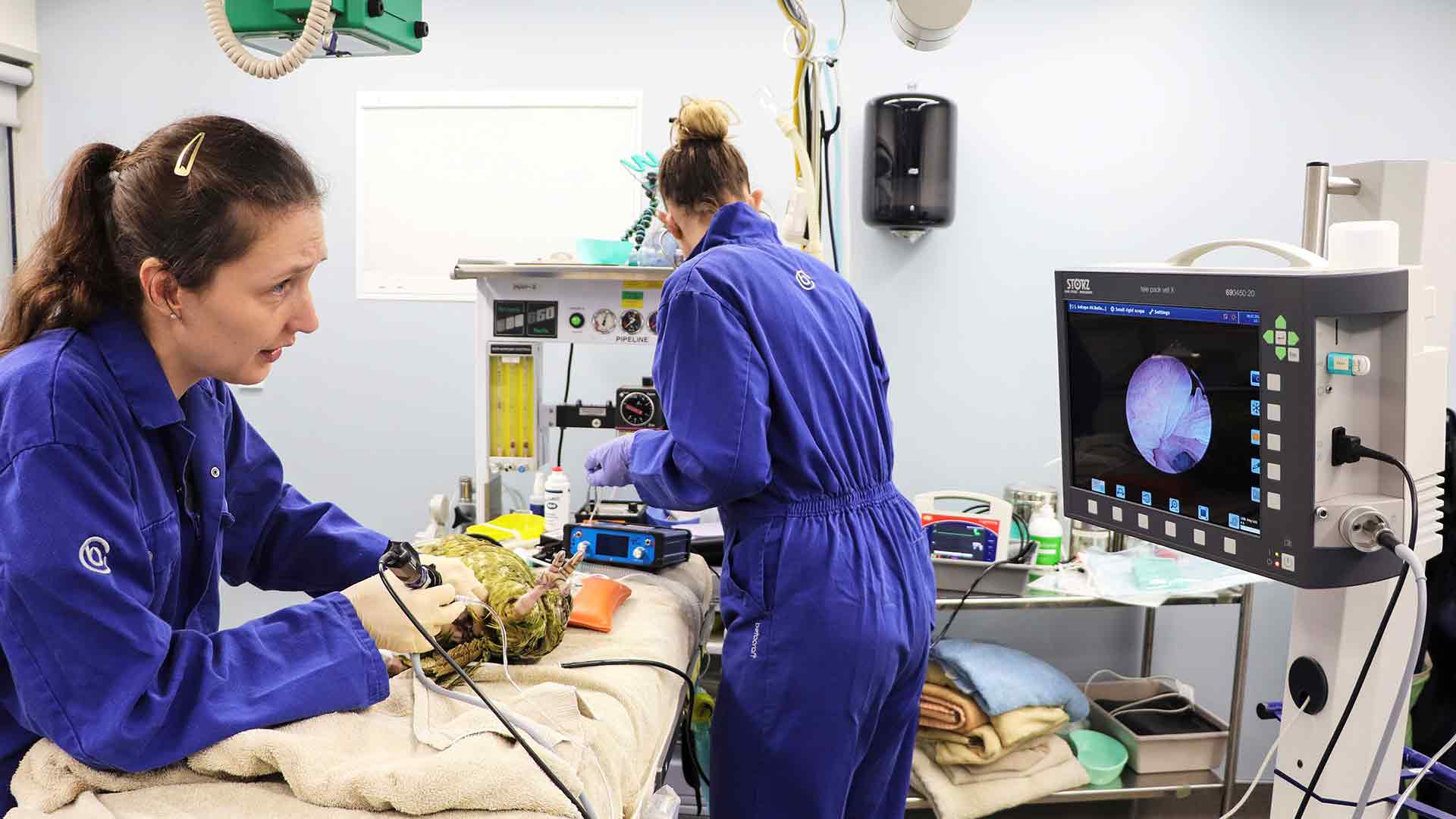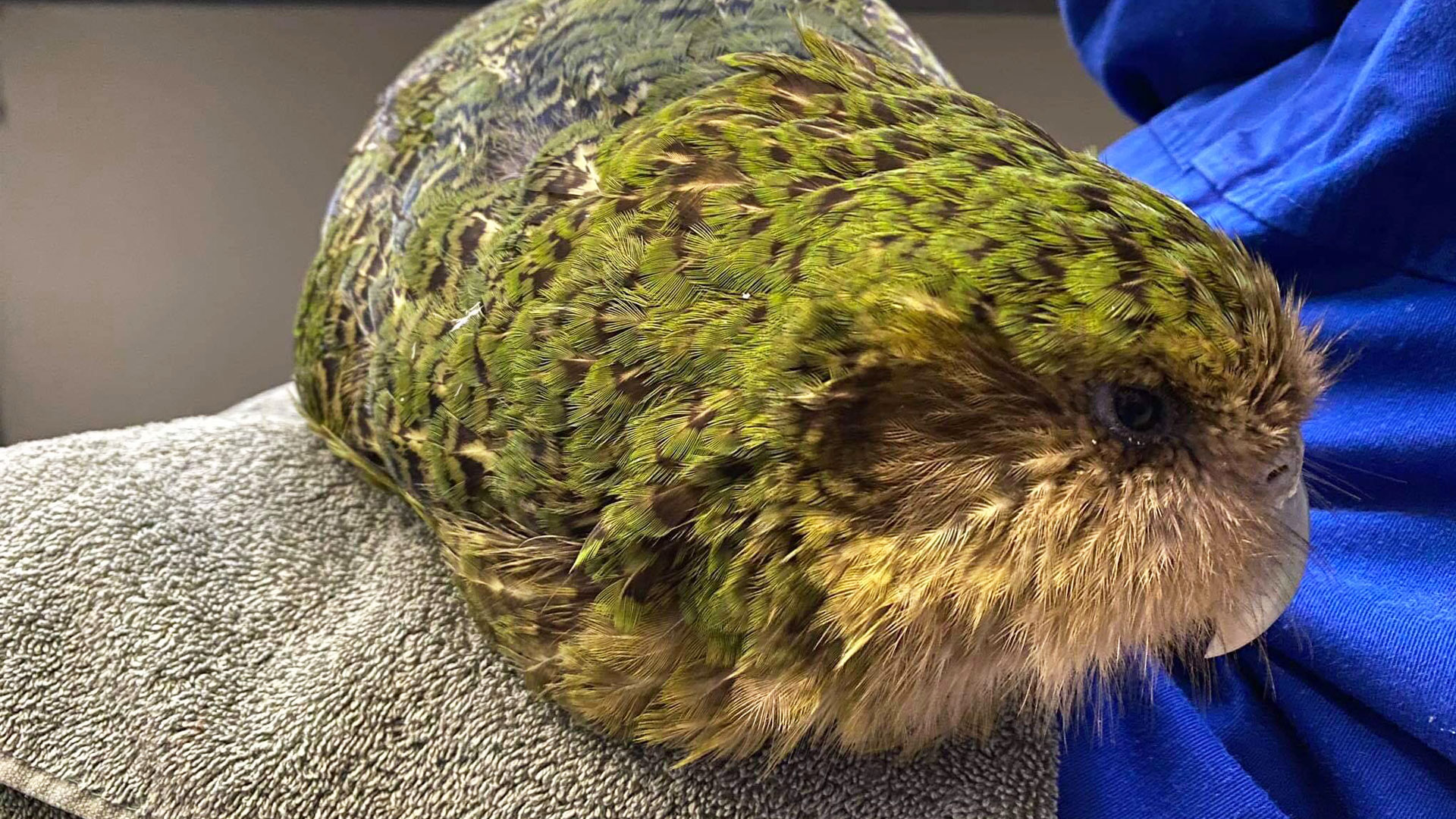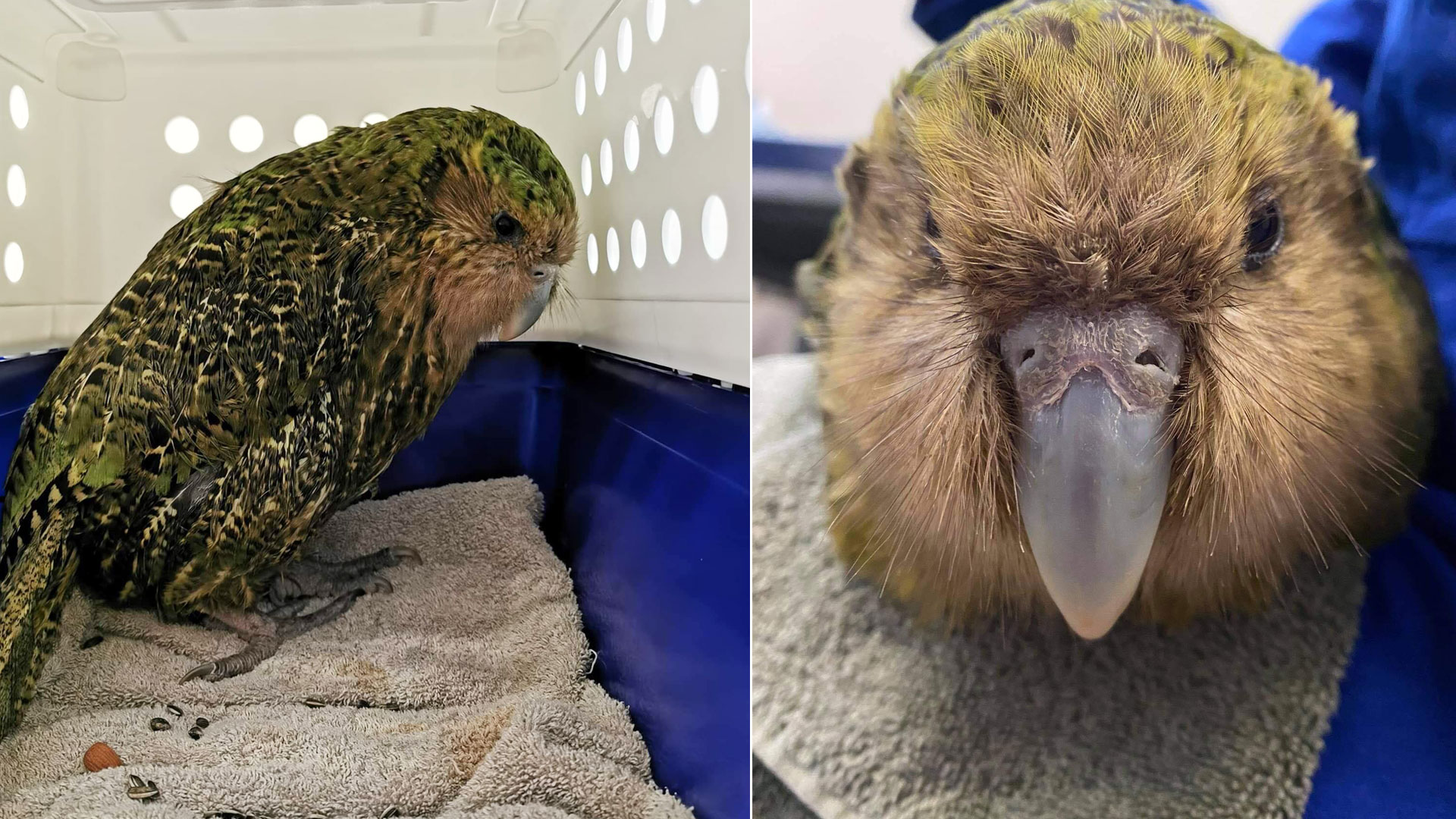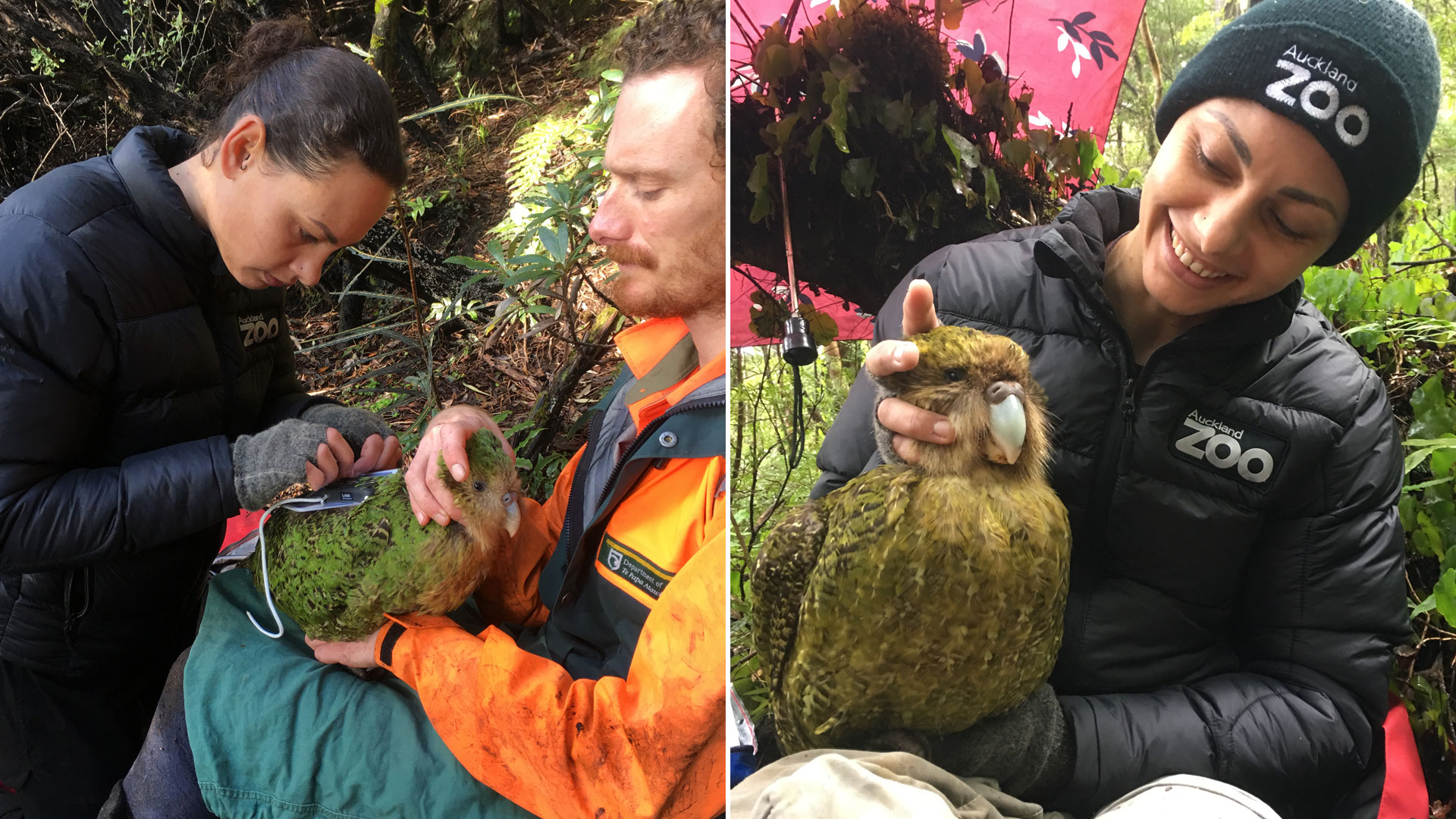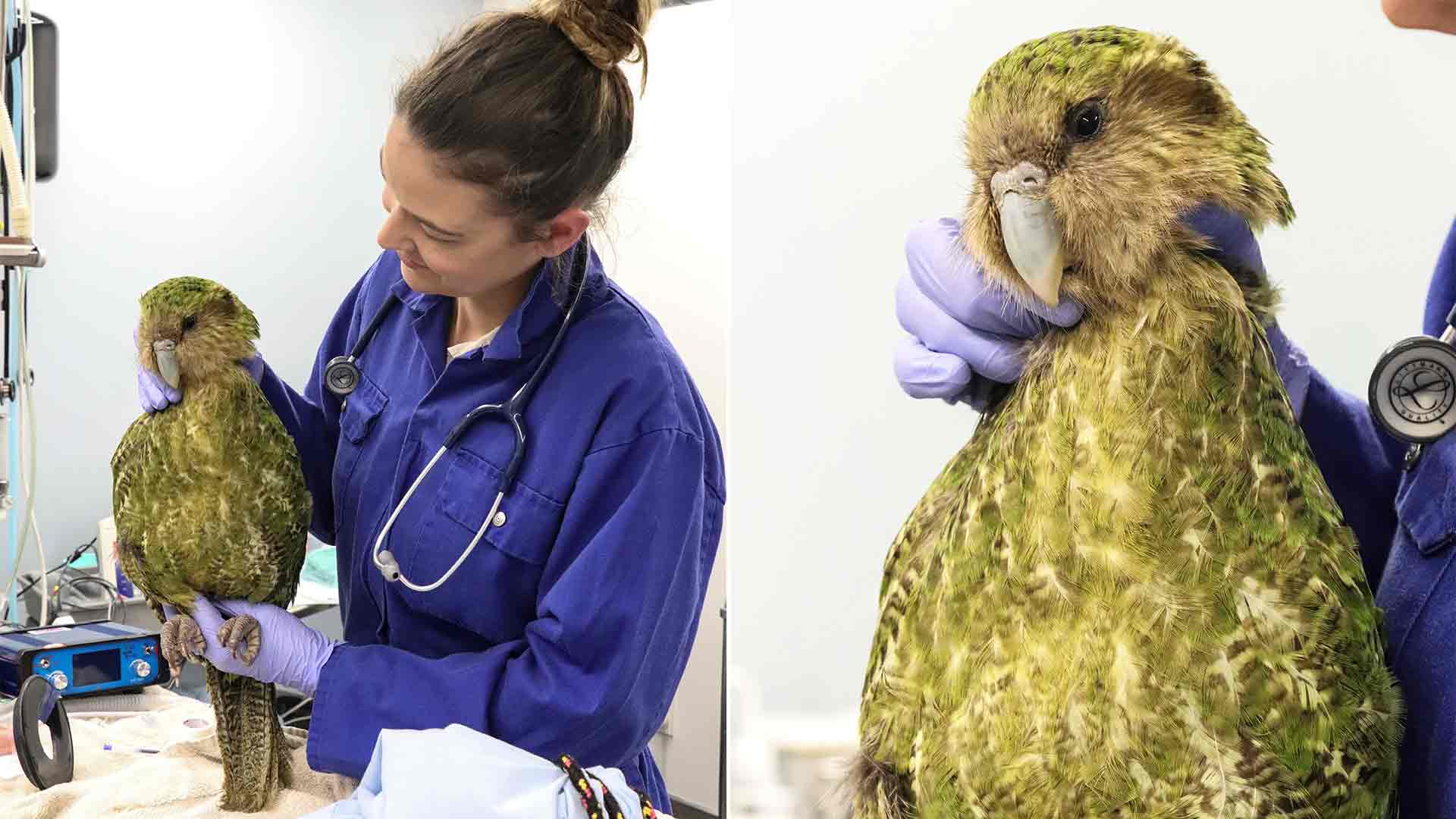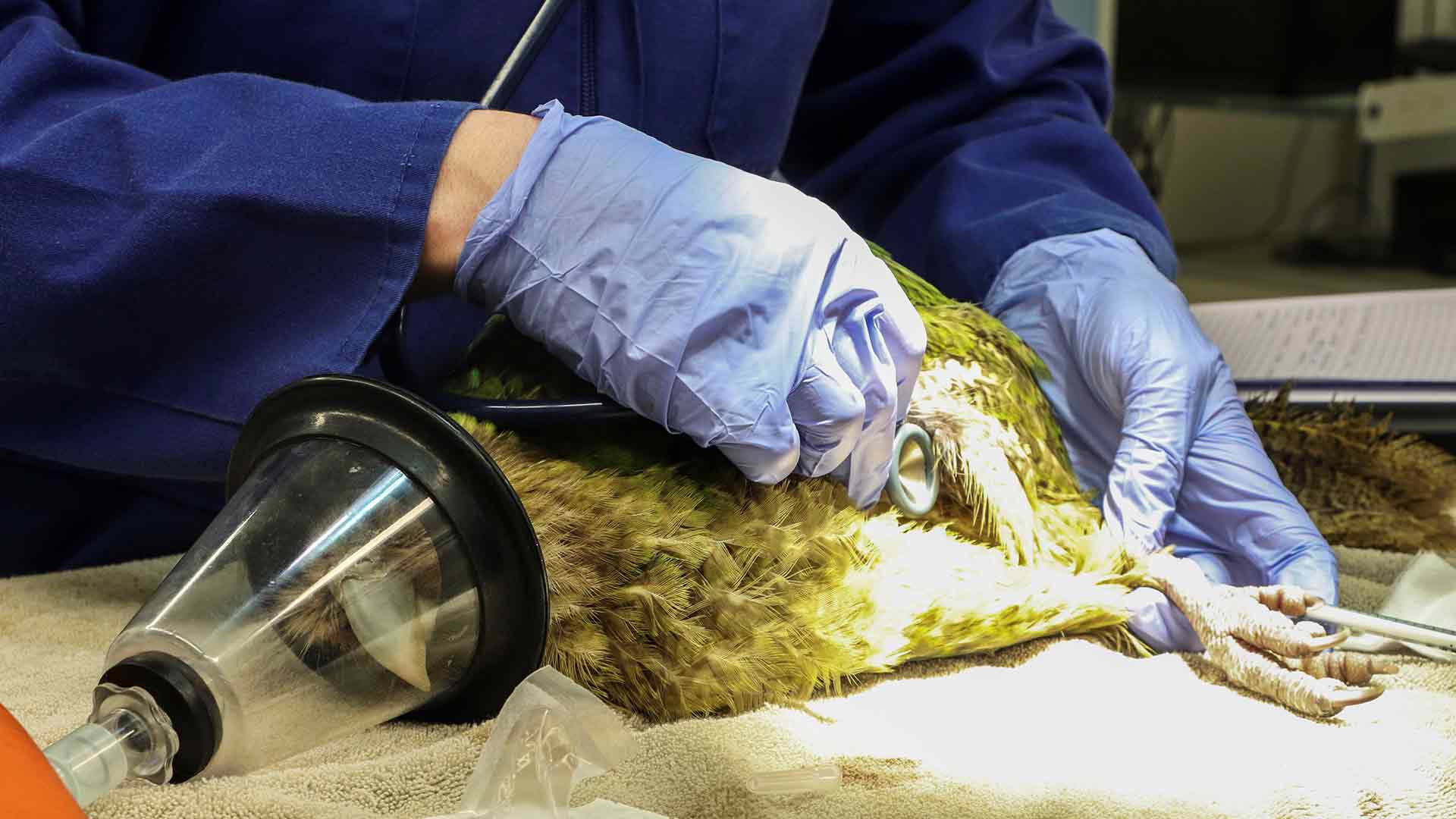Stoic nature, big appetite!
“It’s so heartening to see Bella Rose having come from such a critical condition in late June to being well on her way back to full health. “Combined with the intensive treatments and 24/7 care we’ve been able to give her, it’s her incredibly calm and stoic nature and her love of food that’s also contributing greatly to her recovery from this disease.”
James explains most wild birds don’t like being hospitalised, and when they are, some never eat by themselves. Not the case with Bella Rose – a real foodie, who Kākāpō Recovery’s Technical Advisor, Daryl Eason tells us, was so fond of supplementary foods like high-fat nuts when living on Hauturu (Little Barrier) Island many years ago, that she remained one of their fattest females and got to a whopping 2.43kg – very heavy for a female kākāpō, “and may have been the reason she didn’t breed on Hauturu”.
When it comes to kākāpō cuisine, Auckland Zoo’s vet hospital, with its years of experience with long-stay kākāpō patients, is Michelin star quality! Along with her twice-daily medications and supplementary tube feeds, on the menu for Bella Rose is fresh pohutakawa bark (a big favourite), nikau berries, kawaka, pine needles, pine bark and seed pods and bottle brush – expertly sourced and delivered courtesy of our amazing Horticulture team. The veterinary team says she also loves apple (though will turn her beak up at any pieces less than super fresh!) and is also given sunflower seeds and macadamia nuts as treats.
DOC’s Daryl Eason has plenty of first-hand experience of Bella Rose’s stoic nature and that of many other kākāpō individuals’ determination to pull through tough times.
“Unbeknown to us, Bella Rose broke a leg in the first half of 2019, possibly during the nesting period, but this remained undetected and she continued to incubate eggs and raise chicks whilst her leg was healing. There was no evidence from her nesting behaviour that she had such an injury, which we discovered in June 2019 when she was getting a CT scan at Massey University Wildbase (wildlife hospital) in Palmerston North. It just highlights the stoic nature of kākāpō and their ability to cope in the wild,” says Daryl.


